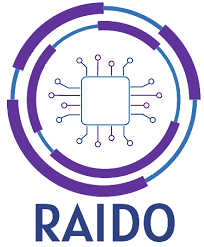GOALS
SDG 7
Ensure access to affordable, reliable, sustainable and modern energy for all.
One of the indicators for this goal is the percentage of population with access to electricity (progress in expanding access to electricity has been made in several countries). Other indicators look at the renewable energy share and energy efficiency.
![]()
AI has been instrumental in advancing Sustainable Development Goal 7 (SDG 7), which aims to ensure access to affordable, reliable, sustainable, and modern energy for all. Between 2015 and 2023, there have been 127,849 scientific publications examining the impact of AI on energy systems. These studies underscore AI’s potential to optimize energy production, enhance grid management, and improve energy efficiency. AI algorithms can analyze large datasets to predict energy demand, optimize the integration of renewable energy sources, and reduce energy wastage. Media exposure, with 24,425 news articles, reflects a growing public interest in the role of AI in transforming energy systems and supporting sustainable energy solutions. Furthermore, the development of 460 AI policies targeting SDG 7 highlights a commitment from policymakers to harness AI technologies to promote energy sustainability, focusing on issues such as smart grids, energy storage, and renewable energy integration.
Looking ahead, the next 5 to 10 years are likely to witness significant advancements in the application of AI to energy systems. AI-driven smart grids will become more prevalent, allowing for better management of electricity distribution and reducing energy losses. These smart grids will enable real-time monitoring and dynamic response to fluctuations in energy demand and supply, leading to more efficient and reliable energy systems. AI will also play a crucial role in advancing renewable energy technologies, optimizing the placement and operation of solar panels and wind turbines to maximize energy production. Additionally, AI can help in the development of advanced energy storage solutions, ensuring a stable supply of renewable energy even when production is variable. As AI technologies continue to evolve, collaboration between governments, energy providers, and technology companies will be essential to ensure that AI-driven innovations contribute to the achievement of SDG 7, promoting sustainable and equitable access to energy for all.
Developed in collaboration with the European Commission project 
Developed in collaboration with the European Commission project ![]()
For analysis we use OECD AI Policy documents. Some of those documents are very large, and we split each document into smaller parts (so called “chunks”), which can contain multiple paragraphs. The reason for this is to prepare data for easier analysis with large language models, so called Retrieval-Augmented Generation (RAG). RAG is an advanced technique that combines retrieval-based methods with generative models to improve the performance of tasks such as question answering, text generation, and other natural language processing (NLP) applications. For each chunk then the sentiment is computed based on VADER (Valence Aware Dictionary and sEntiment Reasoner) methodology. Since VADER is known to have weak multilingual capabilities, all the documents were machine translated into English first.
While the results of this procedure are reliant not only upon the accuracy of the sentiment analysis tool, but also upon the accuracy of machine translation, it is important to stress that sentiment analysis is less sensitive to common machine translation problems than other usages, because sentiment analysis usually focuses on identifying the polarity (positive, negative, neutral) of a text rather than understanding its full semantic content. Also, sentiments in text are often expressed redundantly, which can help mitigate the impact of translation errors. As a result, minor translation errors that do not alter the overall sentiment and do not significantly impact the sentiment analysis is possible.
For the purpose of this analysis, they computed the average sentiment of (chunks of) AI policy documents for each country. We are presenting the visualisation of average sentiment of countries’ AI policy documents on the map. Since AI policy documents are mostly documents of legal nature (acts, policies, regulatory and governance frameworks), the sentiment should be mostly neutral, however, the analysis shows that there are country differences.
VADER computes positive, negative and neutral sentiment. Each of those values are between 0 and 1. The score indicates the proportion of text that is considered positive, negative and neutral. The sum of negative, positive, and neutral sentiment scores always equals 1, however in practice the sum of three sentiment scores can sometimes slightly exceed or fall below 1 due to floating-point precision errors or rounding issues that occur during computation.
Developed in collaboration with the European Commission project ![]()
INDICATORS
Key indicators that report on the status of water sustainability will further understanding of this important topic. With this tool, you can utilize drop-down menus and animations to explore the various aspects of and progress towards SDG 1.



MEDIA
The media room exhibits insight from world and local news, aiming to identify SDG-related events from millions of worldwide multilingual news, and to exhibit best practices towards solving SDG-related problems. This is offered in collaboration with EventRegistry.
SCIENCE
This perspective is providing the IRCAI user with the access to text-mining tools to improve effectiveness in reviewing a topic over a large dataset of published science and patented technology.
POLICY
The observation of policies applied worldwide on SDGs is fundamental to better understand the progress of the global action. Explore the topics related to the legal and regulatory landscape from open data using sophisticated data analytics and machine learning methods.
EDUCATION
Education is key for progress and sustainability. Explore in this room the educational resources in several SDG-related knowledge domains that can help educational institutions, local governments and companies can leverage the Observatory to best fit the professionals of the future.
INNOVATION
The heart beat of entrepreneurship can be the driver for sustainability. Explore in this room the innovation initiatives, from start-ups to living labs, focusing in several SDG-related topics building an ecosystem of initiatives that will enrich the sustainability-focused industrial landscape.